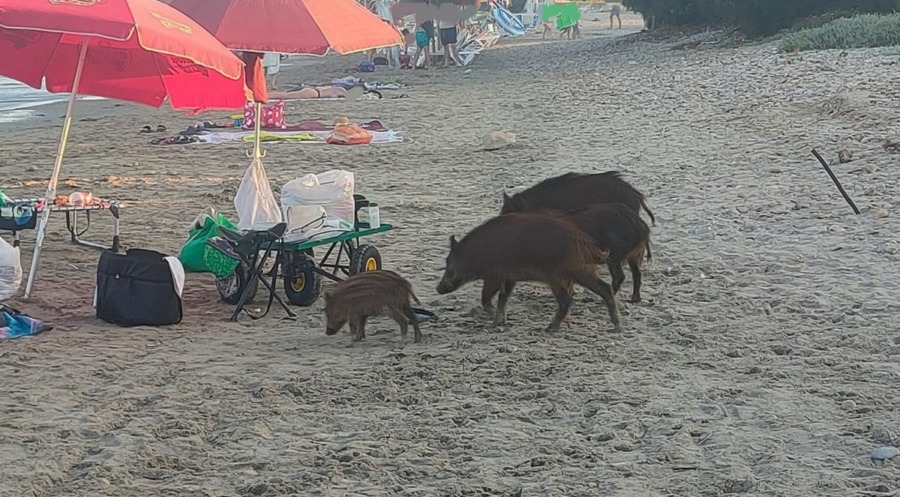By: Manuel Ostos
Contributing Writer
Until now, Spanish beaches were generally quiet places where residents and tourists could bask in the sun, covering themselves with sun creams, because the sun in Spain this summer is more dangerous than ever, with temperatures reaching 45 degrees Celsius, and with the risk of melanomas on tanned skin.
But for a month there has been another danger or, if you prefer, a “new tourist attraction”: many wild animals that live in the forests near the beaches descend to these and walk along the sand in search of food, even stirring in tourists’ bags or eating part of the sandwich that one of them has in their hand while they are in a sun lounger and under a parasol that protects them from the burning rays.
Tourists are divided into two camps, those who find them scary and dangerous, while the others are not bothered by them wandering the beach, as long as they keep their distance. They observe them without fear and often throw a bottle of soda at them to go away, but only for them to return after a few minutes.
For biologist Juan Ortiz from the University of Salamanca, this coexistence between wild animals and bathers is natural. Wild boars need help finding food in forests and wooded areas and go to garbage containers to eat lunch.
In Spain, families have been buying baby wild boars and other exotic animals to keep as pets. Catching and selling them is strictly prohibited, but it continues to be done. Many residents believe this is one reason the wild boars have been popping up on the beaches of Spain.
On Spanish beaches, you can still see photographers carrying a baby leopard on their backs (it is supposed to have been drugged) to offer a photo with the animal. Spain’s black market for wild animals is a lucrative business; foxes, chimpanzees, and turtles; are smuggled from abroad inside the suitcases of some tourists hoping to reach the market.
In some localities, the authorities allow wild boar hunting for a few weeks a year due it the growing uncontrolled population. The killings of these animals are significant, to the point that several NGOs protest against such hunts. But it is evident that, despite this, the wild boars are, each year, more numerous.
Some of those killed by hunters are sold in restaurants where they are cut up and prepared in sauces, grilled or sausages. In principle, a wild animal cannot be cooked without having passed the veterinary checks authorized by the government Department of forest animals. Still, few cooks care to obtain the papers.
The wild boar is the closest relative of the pig, and as is known in Spain, thousands of hams are produced every year that are sold as “tapas,” in sandwiches, on barbecues, or prepared with salt for years until obtaining an intense flavour that both Spaniards like it.
The next time I find myself in Spain and encounter a wild boar appearing on the beach, caution will be my foremost ally as these enigmatic creatures possess a dual nature, alternating between friendliness and hostility, or perhaps even becoming an unintended guest on someone’s dining table, reminding me of the delicate balance between admiration and vigilance in the natural world.









